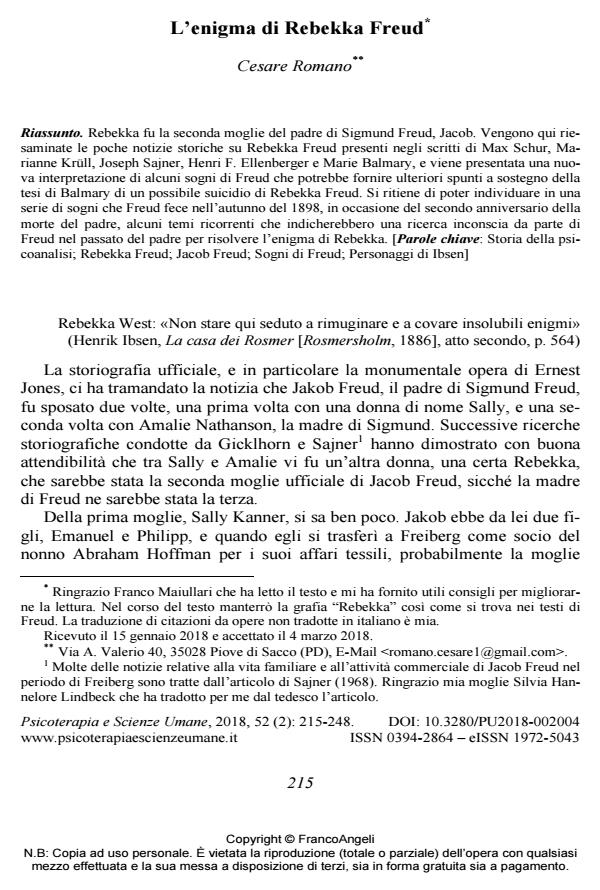The Rebekka Freud riddle
Journal title PSICOTERAPIA E SCIENZE UMANE
Author/s Cesare Romano
Publishing Year 2018 Issue 2018/2
Language Italian Pages 34 P. 215-248 File size 160 KB
DOI 10.3280/PU2018-002004
DOI is like a bar code for intellectual property: to have more infomation
click here
Below, you can see the article first page
If you want to buy this article in PDF format, you can do it, following the instructions to buy download credits

FrancoAngeli is member of Publishers International Linking Association, Inc (PILA), a not-for-profit association which run the CrossRef service enabling links to and from online scholarly content.
Rebekka was Jacob Freud’s second wife. In this paper are reviewed the few historical data pertaining Rebekka Freud. It is suggested a new interpretation of some of Sigmund Freud’s dreams that could confirm Marie Balmary’s conjecture that Rebekka killed herself. It is showed in a succession of Sigmund Freud’s dreams occurred in the fall of 1898, the second Jacob Freud’s death anniversary, the recurrence of few topics dealing with unfortunate wedding and suicide. It is argued that these dreams are a clue of an unconscious Freud’s digging up his father’s past to solve Rebekka’s riddle.
Keywords: History of psychoanalysis; Rebekka Freud; Jacob Freud; Freud’s dreams; Ibsen’s characters
- Il sogno del Conte Thun e la ricerca di Freud sul passato del padre. Una vergogna da nascondere nel passato di Jacob Freud? Cesare Romano, in PSICOTERAPIA E SCIENZE UMANE 4/2019 pp.625
DOI: 10.3280/PU2019-004005
Cesare Romano, L’enigma di Rebekka Freud in "PSICOTERAPIA E SCIENZE UMANE" 2/2018, pp 215-248, DOI: 10.3280/PU2018-002004